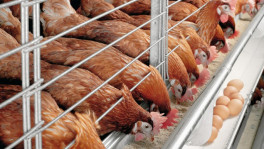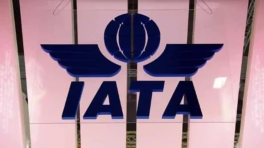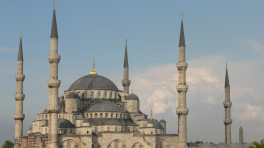Electricity price hike: What are we really paying for?
Power tariffs are set to be raised again. This development warrants a thorough inquiry into the financial dealings, capacity and infrastructure of the BPDB to understand why the BPDB keeps raising electricity prices, what it has to do with operating losses, capacity payments and how we can get out of this mess.

On May 18, 2022, the Bangladesh Energy Regulatory Commission (BERC) proposed to raise power tariffs by 57.83% in a public hearing held at the BIAM foundation. Although this is somewhat lower than the 65.57% increase proposed by the Bangladesh Power Development Board (BPDB), this proposal – if approved – will only worsen the already deteriorating inflationary scenario.
Most experts and relevant authorities blamed BPDB's infamous lack of profitability and overreliance on government subsidies for the tariff hike. BPDB needed to raise the tariffs to match its operating expenses with increased revenue from selling electricity at a higher price.
Since the BPDB is a natural monopoly, there is unlikely to be any sizable fall in demand. Hence, the burden of BPDB's lack of profitability and, therefore, the tariff hike will eventually have to be borne by the consumers.
At this point, one might wonder, after around 50 years of operation, why BPDB keeps incurring large operating losses and seeks government subsidies to cover its costs every fiscal year.
On top of that, Bangladesh is set to pay around Tk1219.1 crore in capacity payments to the Adani Godda 1600 MW Thermal Power Plant, according to a report co-published by the Bangladesh Working Group on External Debt (BWGED) and Indian Growthwatch.
These recent developments warrant a thorough inquiry into the financial dealings, capacity and infrastructure of the BPDB to understand why the BPDB keeps raising electricity prices, what it has to do with operating losses, capacity payments and how we can get out of this mess.
Why BPDB consistently reports operating losses
Operating loss is defined as total operating revenue minus total operating expense. Most of BPDB's operating income comes from the sale of electricity. For instance, approximately 96.1% of its total operating revenue came from the sale of electricity in FY 2020-21.
On the other hand, most of its operating expenses are spent on generating and purchasing electricity from different sources (96.26% in FY 2020-21) such as public plants, IPP (Independent Power Producers), rental and quick-rentals, as well as imports from India.
Hence, BPDB's poor performance can either be blamed on poor sales of electricity or excessive expenses on purchasing electricity. That is, BPDB's revenue from the sale of electricity has not been rising proportionately to match its rise in the cost of buying and generating electricity.
Debunking the demand-side argument
While many like to blame stagnant demand for BPDB's poor financial performance, it can at best be a minor exogenous factor or merely an easy scapegoat.
Any forward-looking organisation plans its production based on the existing as well as expected demand for its goods or services in the near future. If the firms expect the demand to be higher in future, they will expand their production capacity and reduce otherwise.
But as can be seen from Figure-01A, BPDB's annual increase in total generation capacity since FY 2010-11 has consistently exceeded its peak demand for electricity generation by quite some margin. That means BPDB has not adjusted its generation capacity with changes in demand and consequently reported unused excess capacity each year since FY 2011-12.
On average, since FY 2011-12, BPDB's new addition to generation capacity has exceeded the rise in peak demand (MW) by 649MW per year. For the layman, it means that BPDB, on average, is adding 649 MW of excess generation capacity to its infrastructure each year.
Over the years, BPDB has accumulated an excess generation capacity of 7,531 MW (Figure-01B) and boasts a 22,031 MW overall generation capacity, 152% larger than what's required to meet peak demand.
To be fair to BPDB, seamless electricity transmission may require the generation capacity to be higher than peak generation demand. But one wonders whether we really need more than 50% surplus capacity.
With the 'lack of demand' argument out of the way, we can focus on the more important aspect of the problem: the excessively high cost of purchasing electricity. BPDB's high cost of buying electricity stems from two underlying issues: its overreliance on more expensive sources of electricity such as private plants (IPP and rentals) and imports; capacity payments.
Capacity payments: how overcapacity leads to operating losses
Capacity payments are payments made to a plant when the plant sits idle or the BPDB fails to meet a particular target of electricity purchase from that plant. The obligation to pay capacity charge is generally embedded in the contracts signed with these domestic as well as foreign (typically Indian) plants.
To the laypeople, capacity payments are simply a waste of taxpayer money paid out to plants as incentives to keep their plants idle. Usually, the BPDB pays Tk2.83 in capacity charge per unit. But it can be higher for some foreign plants like the Adani Godda plant mentioned earlier.

So, it makes sense that the BPDB should try its best to keep capacity payments at a minimum. Unfortunately, the capacity payments have also risen steadily over the years (except for FY 2014-15, when they fell by 14.135%). In FY 2020-21, capacity payments rose 47.83% to reach Tk132 billion, an amount that could be used to finance projects equivalent to three Padma bridges or nine Karnafuli Tunnels or more than four metro rail.
More importantly, capacity payments have consistently been a major contributor to both BPDB's operating expense and its expenses on electricity purchases, as shown in figure 06. In FY 2020-21, capacity payments constituted 26.17% of BPDB's total operating expenditure and about 30.9% of its expenses on electricity purchases (excluding generation costs).
Since FY 2010-11, capacity payments as a share of total electricity purchase hovered around the 20% to 30% mark and its share in total operating expenses hovered between 15% to 25%.
When capacity payments are subtracted from the total operating expenses of BPDB (in an ideal world BPDB should have no wastage), since FY 2010-11, BPDB would have been profitable in at least seven cases, instead of reporting losses in each of the eleven fiscal years, as shown in Figure-03.
Some may argue that the capacity payments are inevitable as long as the capacity of public plants cannot meet peak demand for electricity. The question is, how many private plants does BPDB need? As mentioned previously, as of FY 2020-21, the public plants can meet about 78% of peak generation demand. Moreover, BPDB had over 50% excess generation capacity in the previous two fiscal years.
In fact, BPDB has exhibited surplus generation capacity in each of the past ten years since FY 2011-12. And I have already shown that the rise in demand cannot account for the surge in generation capacity.
Where BPDB purchases electricity from
Another source of high operating expenses depends on the source of electricity purchase, as not all sources charge the same price. The average cost of purchasing electricity from BPDB has consistently remained the lowest for BPDB's own generation and public plants, while the average per-unit cost of purchasing electricity has remained considerably higher for IPPs, Rentals and imports from India.
Since FY 2010-11, the average cost per unit of electricity for BPDB's own generation, public plants is calculated to be Tk3.44 and Tk4.55, respectively. For IPP and rentals, on the other hand, the average cost per unit for IPP and rentals was Tk5.55 and Tk8.65.
Ideally, it would make sense for the BPDB to gravitate towards electricity generated by itself and purchase electricity from low-cost sources like public plants. However, the public plants alone do not possess the generation capacity to meet the peak demand for electricity.
Consequently, BPDB has to purchase electricity from private sources. It is worth noting, however, that the generation capacity of public plants has improved from covering only 51.78% of peak demand in FY 2010-11 to 78.55% of peak demand in FY 2020-21. What we are interested in, is the ratio at which BPDB purchases electricity from private plants (IPP, SIPP and rentals) vs public plants.
Ideally, the net generation of plants (total electricity generated from a plant in a fiscal year) should be proportionate to their generation capacity. But a different picture props up in reality.
Despite constituting about 51.7% of total generation capacity in FY 2020-21, only 40.6% of total generated/purchased electricity was sourced from low-cost public plants. On the other hand, during the same period, 44.27% of net electricity generation came from private plants despite having a lower share of total capacity (41.9%).
This trend of over-reliance on the private plants has been consistent (except for FY 2018-19 & FY 2019-20) over the years, as we can see from Figures 04A and 04B. Unfortunately, BPDB must keep purchasing more electricity from the expensive private plants because of contractual obligations and avoid capacity payments.
The next logical question would be: if BPDB already has excess capacity (which is also driving its operating losses), why does it keep signing new contracts with private plants?
While many pundits may blame it on incompetence and contractual obligations, a lack of political goodwill and the influence of discretionary forces may also be added to the list of problems.
Regardless of the answer, it is worth investigating why the Power Division and the BPDB keep approving new private plants when we already have excess capacity. Why is the government not getting out of contracts with private plants that remain idle for most of the year and cost us large sums of money in capacity payments?
It is crucial because BPDB's losses are either covered through government subsidies which is essentially the taxpayer's money, or by raising power tariffs which also adversely affect the living standards of millions of ordinary citizens of this country.


 Keep updated, follow The Business Standard's Google news channel
Keep updated, follow The Business Standard's Google news channel














